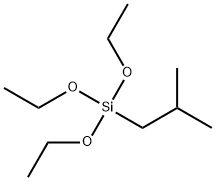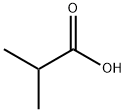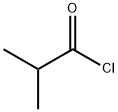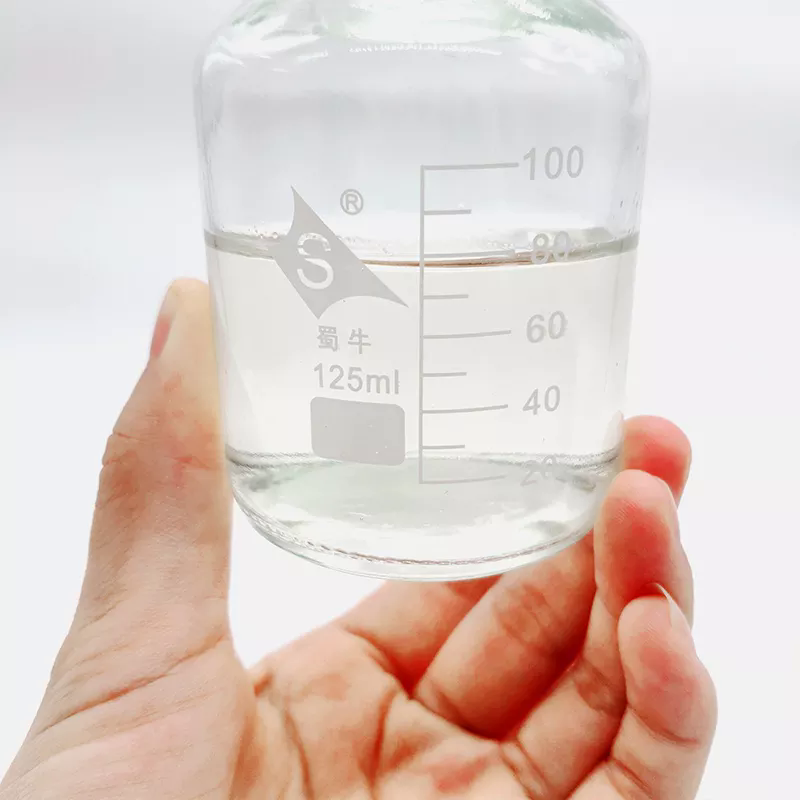Isobutyric anhydride
Synonym(s):2-Methylpropionic anhydride;Bis(2-methylpropionic acid) anhydride, 2-Methylpropionic anhydride;Isobutyric anhydride
- CAS NO.:97-72-3
- Empirical Formula: C8H14O3
- Molecular Weight: 158.2
- MDL number: MFCD00008913
- EINECS: 202-603-6
- SAFETY DATA SHEET (SDS)
- Update Date: 2025-09-25 17:15:13

What is Isobutyric anhydride?
Chemical properties
clear colorless liquid
The Uses of Isobutyric anhydride
Isobutyric anhydride was used in the synthesis of 4-O-isobutyryl derivative via reaction with octyl β-D-glucopyranoside in the presence of C2-symmetric chiral 4-pyrrolidinopyridine as a catalyst.
The Uses of Isobutyric anhydride
Chemical intermediate.
Definition
ChEBI: An acyclic carboxylic anhydride of isobutyric acid. Metabolite observed in cancer metabolism.
Preparation
Isobutyric anhydride is prepared from iso-Butyryl chloride and Sodium acetate, or: from iso-Butyryl chloride and Butyric acid with a catalyst.
General Description
A colorless liquid. Flash point 139°F. Burns skin and eyes. Vapors are heavier than air.
Air & Water Reactions
Flammable. Reacts exothermically with water or moisture-containing materials to form isobutyric acid.
Reactivity Profile
Isobutyric anhydride reacts exothermically with water. The reactions are sometimes slow, but can become violent when local heating accelerates their rate. Acids accelerate the reaction with water. Incompatible with a cids, strong oxidizing agents, alcohols, amines, and bases.
Hazard
Strong irritant to tissue.
Health Hazard
May cause toxic effects if inhaled or ingested/swallowed. Contact with substance may cause severe burns to skin and eyes. Fire will produce irritating, corrosive and/or toxic gases. Vapors may cause dizziness or suffocation. Runoff from fire control or dilution water may cause pollution.
Fire Hazard
Flammable/combustible material. May be ignited by heat, sparks or flames. Vapors may form explosive mixtures with air. Vapors may travel to source of ignition and flash back. Most vapors are heavier than air. They will spread along ground and collect in low or confined areas (sewers, basements, tanks). Vapor explosion hazard indoors, outdoors or in sewers. Runoff to sewer may create fire or explosion hazard. Containers may explode when heated. Many liquids are lighter than water.
Properties of Isobutyric anhydride
| Melting point: | -56 °C (lit.) |
| Boiling point: | 182 °C (lit.) |
| Density | 0.954 g/mL at 25 °C (lit.) |
| vapor density | 5.45 (vs air) |
| vapor pressure | 10 mm Hg ( 67 °C) |
| refractive index | n |
| Flash point: | 152 °F |
| storage temp. | Store below +30°C. |
| form | Liquid |
| color | Clear colorless |
| explosive limit | 1.09%, 87°F |
| Water Solubility | decomposes |
| Sensitive | Moisture Sensitive |
| BRN | 386267 |
| Exposure limits | ACGIH: TWA 10 ppm NIOSH: TWA 10 ppm(30 mg/m3); STEL 15 ppm(45 mg/m3) |
| Dielectric constant | 13.9(20℃) |
| CAS DataBase Reference | 97-72-3(CAS DataBase Reference) |
| NIST Chemistry Reference | Propanoic acid, 2-methyl-, anhydride(97-72-3) |
| EPA Substance Registry System | Isobutyric anhydride (97-72-3) |
Safety information for Isobutyric anhydride
| Signal word | Danger |
| Pictogram(s) |
 Corrosion Corrosives GHS05  Skull and Crossbones Acute Toxicity GHS06 |
| GHS Hazard Statements |
H314:Skin corrosion/irritation |
| Precautionary Statement Codes |
P270:Do not eat, drink or smoke when using this product. P280:Wear protective gloves/protective clothing/eye protection/face protection. P303+P361+P353:IF ON SKIN (or hair): Remove/Take off Immediately all contaminated clothing. Rinse SKIN with water/shower. P305+P351+P338:IF IN EYES: Rinse cautiously with water for several minutes. Remove contact lenses, if present and easy to do. Continuerinsing. |
Computed Descriptors for Isobutyric anhydride
Isobutyric anhydride manufacturer
New Products
Indole Methyl Resin tert-butyl 9-methoxy-3-azaspiro[5.5]undecane-3-carboxylate Boc-His(Boc)-OH 2-CTC Resin 4-Chloro-7-tosy1-7Hpyrrolo[2,3-d]pyrimidine 5,7-Dibromo-1H-indole 2,5-dichloro-N-hydroxy-4,6-dimethylpyridine-3-carboximidamide 2,2-Dimethoxy-7-azaspiro[3.5]nonane hydrochloride 4-chloromethyl-5-methyl-1,3-dioxol-2-one (DMDO-Cl) R-2-BENZYLOXY PROPIONIC ACID 1,1’-CARBONYLDIIMIDAZOLE 1,1’-CARBONYLDI (1,2-4 TRIAZOLE) N-METHYL INDAZOLE-3-CARBOXYLIC ACID 4-((2-hydroxyethyl)thio)benzoic acid 1-(TERT-BUTOXYCARBONYL)-2-PYRROLIDINONE Methyl 6-methylnicotinate 3-Pyridineacrylic acid tert-Butyl carbazate TETRAHYDRO-2H-PYRAN-3-OL 2-((4-morpholinophenylamino) (methylthio) methylene) malononitrile 3-(4-morpholinophenylamino)-5-amino-1H-pyrazole-4-carbonitrile 2,4-dihydroxybenzaldehyde 1,3-Diethyl-1,3-Diphenylurea Methyl 2-methylquinoline-6-carboxylateRelated products of tetrahydrofuran








You may like
-
 Isobutyric anhydride 98%View Details
Isobutyric anhydride 98%View Details -
 Isobutyric anhydride 98%View Details
Isobutyric anhydride 98%View Details
97-72-3 -
 97-72-3 99%View Details
97-72-3 99%View Details
97-72-3 -
 Isobutyric anhydride CAS 97-72-3View Details
Isobutyric anhydride CAS 97-72-3View Details
97-72-3 -
 Isobutyric anhydride CAS 97-72-3View Details
Isobutyric anhydride CAS 97-72-3View Details
97-72-3 -
 Isobutyric Anhydride CAS 97-72-3View Details
Isobutyric Anhydride CAS 97-72-3View Details
97-72-3 -
 Isobutyric anhydride CAS 97-72-3View Details
Isobutyric anhydride CAS 97-72-3View Details
97-72-3 -
 Isobutyric Anhydride, LiquidView Details
Isobutyric Anhydride, LiquidView Details
97-72-3
